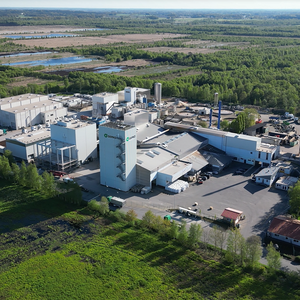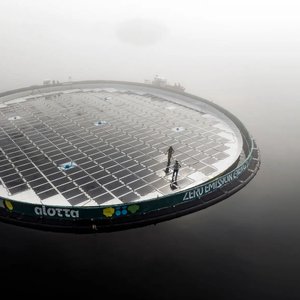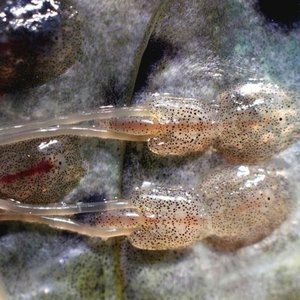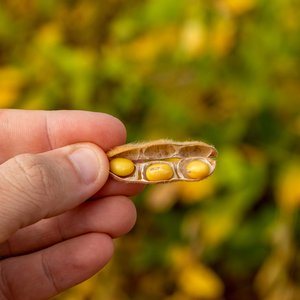S. Korea ready to breed tuna for commercial production
South Korea is ready to breed bluefin tuna to better meet global consumer demand and cope with dwindling stocks that have triggered calls for fishing restrictions, local aquaculture experts said.
Experts from the state-run National Fisheries Research and Development Institute (NFRDI) said local tuna farming, which first began in 2007 with just 11 fish, has since expanded to 300 bluefins being raised in three net cages off Yokji Island about 520km southeast of Seoul on the country's southern coast.
The first commercial sales of tuna raised in special cages should take place in around 2015, with good potential for overseas sales to countries like Japan and China, they said.
Data Picture
The tuna being raised are between 10kg to 40kg in size and have been caught for the past three years directly from the sea. Those that have been successfully moved from nets to the holding cages are being held for observation and research purposes.
"At present, researchers can only catch juvenile fish weighing less than 3kg and raise them in specially-built net cages, but efforts are under way to breed the fish directly from tuna held in captivity," said Kim Eung-oh, director of the NFRDI's South Sea Fisheries Research Institute.
He said researchers may be able to start collecting fertilized eggs from the tuna as early as next year if the conditions are right.
"The goal is to establish a complete aquaculture system that will permit less wild tuna to be caught from the sea," he said. Kim added this would allow the country to sidestep any moves to limit fishing and bolster the incomes of local fishermen.
The effort may prove especially profitable if the European Union puts the bluefin on the endangered species list. Last week Brussels provisionally backed a proposal by Monaco to ban fishing of the bluefin in the Atlantic and the Mediterranean Sea, but it will need to seek the approval of all EU member countries.
At present only Japan has been successful in breeding tuna in captivity, with Spain, Croatia, Australia and Mexico catching juvenile fish and raising them for the market through a so-called fattening process. Most tuna raised in this manner are sold in 3-4 years after they reach 50kg.
Kim said that while South Korea is a relative late starter compared to Japan, researchers are confident they will be able to catch up with their neighbor.
"In many areas South Korea's aquaculture technology is world-class and it would not be difficult to develop techniques on par with those being used in Japan," the director said.
Essential areas include the development of suitable feeds that can help growth, the reduction of of mercury levels in tuna that have been cited for posing health risks, and increase the survival rate of artificially raised fish.
"Out of the 10-30 million eggs that a single fish can produce just 0.3-0.5 percent reach 0.5-1kg sizes, and countermeasures must be developed to prevent fish from killing themselves by ramming the cages and to deal with red tides that can devastate fish farms," Kim said.
Reflecting the market potential for artificially raised bluefin tuna, Hong Seok-nam, president of the Insung Marine Product Co. said aquaculture is a viable alternative to fishing.
He said that of the 4.35 million tons of tuna caught worldwide every year, bluefins, which are prized for their taste and texture, make up just 1 percent or 50,000 tons.
"A 50kg bluefin can fetch 3 million won (US$2,462) on the market with profit levels for the grower reaching up to 30 percent," he said, citing reports published in Japan.
The executive, who caught a record 600t of tuna in one haul in the early 1990s, said South Korea is ideally situated to sell its fish to neighboring countries -- something that could help the country's exports.
"Japan consumes 3,720g of tuna per person on an annual basis making it the largest consumer market in the world, and demand is rising rapidly in China," he said. An average South Korean consumes 57g of tuna on an annual basis.
He added that compared to juvenile fish, a fully grown tuna can fetch 10-20 times more.
Hong said that his company spent 300 million won on the joint project with NFRDI and asked for more state research and development support to push forward the country's tuna aquaculture knowhow.
Park Chong-guk, deputy minister for fisheries policies, said 1.6 billion won will be used in 2010 to help aqua-farming for tuna. Of the total, 1.2 billion won will come from the central and regional governments, with the rest to be generated from the private sector.
He said that while climate change has increased the number of tuna caught in South Korean waters from 833t in 2006 to 1,543t last year, international pressure to limit national quotas is making aquaculture a necessary alternative.
Overfishing has reduced the size of the worldwide tuna stocks as much as 90 percent in some waters with concerns rising that the Atlantic bluefin will become extinct in the next couple of years unless remedial actions are taken.
"We have bought several artificially grown tuna from Japan for 100,000 won per fish, but want to be fully independent in the breeding process," the official from the Ministry of Food, Agriculture, Forestry and Fisheries said.
He declined to say when the country will be able to develop a full aquaculture system for tuna but hinted it could take place within the next few years if fertilized eggs can be retrieved and grown in laboratories.
South Korea already farms sea breams, flounders and mackerels, with the ministry taking steps to conduct feasibility tests on raising pollacks that are very difficult to raise.










